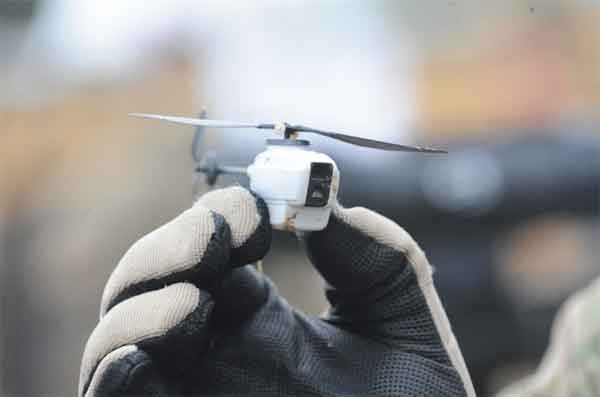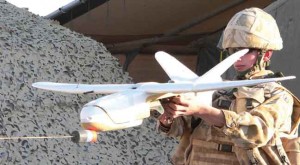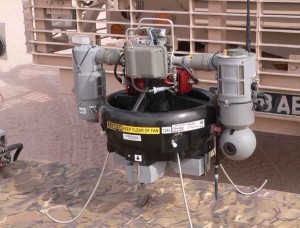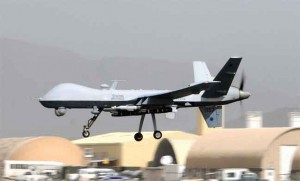As UAS technology matures and prices start to drop with from Commercial Off-The-Shelf (COTS) components, more agencies are becoming interested in adopting UAS platforms and the market is on the brink of yet another explosion. This will put more pressure on military users to refine the training of the man in-the-loop and for industry to look for innovative methods of keeping ahead of the expected surge in demand for UAS pilot operators.
The UK has spent more than $1 billion on delivering and sustaining Unmanned Air Systems (UAS)…
Unmanned Aerial Systems (UAS) are forecast to continue as the most dynamic growth sector of the world aerospace industry this decade with spending on UAS set to more than double over the next decade to more than $89 billion. UAS seem to have proved their value in Iraq and Afghanistan and are being sought by a growing number of militaries worldwide. With defence strategies pivoted to Asia and potential future operations in Anti-Access/Area-Denial (A2/AD) environments, there will be a requirement for longer-range and stealthy sensors for a variety of new and legacy UAV platforms.
High Accident Rate
However, despite the advantages that the UAS extend to the military, concerns regarding high accident rates continue with crashes reported from all parts of the world, caused mostly due to poor weather, human error and system failures. Such crashes not only lead to a waste of money but can also compromise highly classified missions. After more than a decade of operating UAVs in Iraq and Afghanistan, the UK Ministry of Defence (MoD) has revealed the extent of its UAS attrition and the impact of not having a UAS pilot training regime that was ‘fit for purpose’.
The UK has spent more than $1 billion on delivering and sustaining UAS, all purchased as Urgent Operational Requirements (UOR) since 2007. They range from the Black Hornet VTOL nano-UAV to the MQ-9 Reaper hunter-killer UAS and at the end of last year, the MoD revealed that the British military has lost more than 450 UAVs during operations in Afghanistan and Iraq. The vast majority of these were
Desert Hawk mini UAVs, operated by 32 Regiment of the British Army whose only previous experience of UAVs was with the Phoenix tactical UAV. Built by GEC/BAe, the Phoenix was millions of pounds over budget and took ten years to develop. During operations in Kosovo and Iraq in the 1990s, 36 of the 116 deployed air vehicles were lost or damaged beyond repair.
The British Army has lost a total of 11 Elbit Hermes 450 long-endurance tactical UAVs, more than fifty per cent of the acquired fleet operated by 32 Regiment in Afghanistan. A subsequent Service Inquiry (SI) blasted every aspect of the Army’s H450 UAV pilot training, from personnel selection through to the vehicle operation itself and the roulement model adopted for deployment.
Focus on Training
“There are currently no aptitude tests, verbal or numerical reasoning tests conducted to determine an individual’s suitability for H450 pilot training,” the SI report states, adding, “The continually increasing demands of the operational requirement since the Hermes 450 UOR began in 2007 is constraining the length available to train and qualify pilots.”
The British Army has lost a total of 11 Elbit Hermes 450 long-endurance tactical UAVs…
With no live flying available in the UK, student pilots undertake a preliminary six-week course on the H450 in Israel. The report states that, although this phase of training allows the students to experience flying the UAV, it does not allow for representative training of operations from Bastion Airfield. “For instance,” it says, “the students cannot interact with local air traffic control or other aircraft as all communications are made in Hebrew by the instructor. This leaves the student solely to focus on operating the H450, but could also inadvertently train them to ignore what is going on around them and therefore impact on their ability to develop airmanship and situational awareness.”
The lack of training of the GPS-Take-Off and Landing System (GTOLS) is cause for particular concern, the report noted. Students are meant to spend approximately ten hours of simulator time over a three-month period but a serious lack of equipment and qualified training personnel is hampering this effort. Indeed, the extent of this problem is so acute that students are in danger of forgetting what little training they have had in the GTOLS system and the procedures for its use by the time they deploy to Afghanistan.
Overall, the report stated that the army’s inadequate and truncated training pipeline of, “just enough, just in time” hampers the ability of the army’s UAV operators to develop a wider understanding of aviation.
In conclusion, the SI gave a stark warning. “Unless urgently addressed, the contributory factors identified by this SI are likely to continue to affect H450 operations and may contribute to a further accident or incident. Without action, there is also significant risk that these factors could be transferred to the Watchkeeper programme when it begins flying in the United Kingdom and on operations overseas.”
The lack of training of the GPS-Take-Off and Landing System (GTOLS) is cause for particular concern…
The Watchkeeper is a $1 billion programme to provide 54 short-range ISTAR UAVs developed from the Hermes 450 with a suite of sophisticated mission payloads. Thales won the contract in 2004 and crews from 32 Regiment of the British Royal Artillery are currently being trained at a dedicated facility in Larkhill that opened in 2010.
Selex ES was selected to deliver the through-life training solution for the programme is responsible for managing the development and delivery of training to meet the individual, team and collective training requirements of both operator and maintenance crews. A Learning Needs Analysis (LNA) identified the requirement for a balance of real and synthetic learning to enable crews to successfully transfer from a training environment to the complex operating environment of the Watchkeeper system and ensure operators are competent in their roles.
This training solution employs real-time desktop simulation and image generation in a scalable synthetic environment. It features classroom-based instruction facilities, physical models for assembly and disassembly, as also mock-up ground control stations through which operators will learn to control simulated TUAVs and their onboard suite of imaging payloads.









